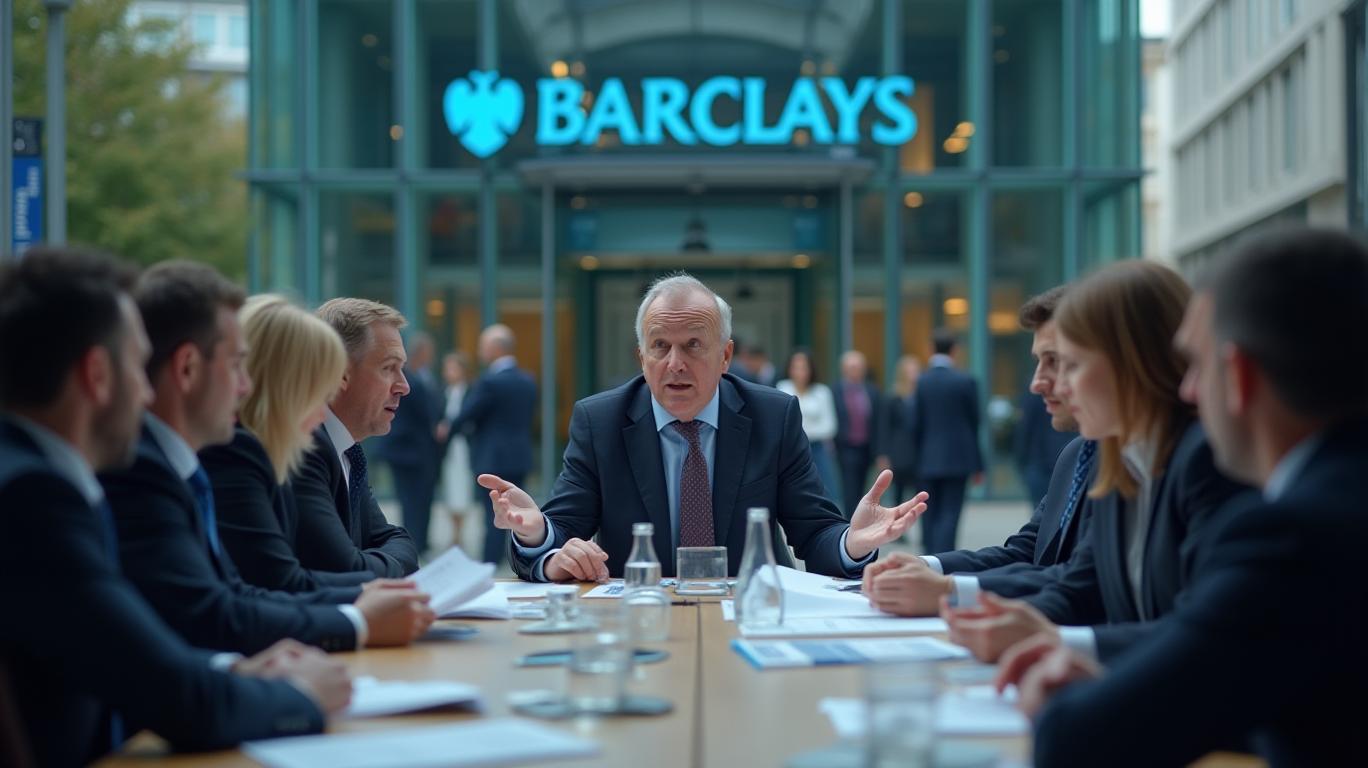Barclays Surges in Q1 as Trump-Driven Volatility Boosts Trading Revenue
Barclays PLC delivered a robust first-quarter performance, outpacing forecasts with a 19% year-on-year jump in pre-tax profit to £2.7 billion ($3.62 billion). The London-based bank’s results underscored the dual-edged impact of U.S. President Donald Trump’s early policies: heightened market volatility supercharged trading revenues, while looming trade tensions cast a shadow over its risk outlook.
The investment bank division emerged as a standout, with income rising 16% to £3.9 billion, fueled by a 21% surge in fixed income trading. This outperformed both its own expectations and the modest 6% growth seen at major Wall Street peers. Barclays’ success in securitized products and interest rate derivatives highlighted its agility in capitalizing on the turbulence of Trump’s first months in office, which included aggressive tariff threats and regulatory shifts.

Trading Triumphs and Equity Lags
While fixed income trading soared, equities income grew just 9%—a stark contrast to the 32% average increase reported by U.S. rivals like JPMorgan and Goldman Sachs. Barclays’ struggles in equities reflect broader challenges in competing with Wall Street’s dominance in stock-related products. The disparity raises questions about whether the bank can sustain its investment banking momentum or if fixed income gains are masking structural weaknesses in other areas.
The quarter also revealed the fragility of Barclays’ optimism. A £91 million rise in provisions for potential loan losses—primarily tied to U.S. consumer and investment banking divisions—reflected growing unease over Trump’s trade policies. “The tariffs are a wild card,” said one analyst, noting that Barclays’ exposure to cross-border trade could amplify losses if global supply chains fracture further.
Strategic Shifts and Cost Discipline
CEO C.S. Venkatakrishnan emphasized Barclays’ focus on its UK core, where lending market share grew and capital productivity improved to 7.7%. The bank’s decision to raise its 2025 income target to above £12.5 billion signals confidence in its mortgage and consumer lending segments—a strategy that could insulate it from U.S. political volatility. Yet, with the UK’s ringfencing rules still in place, Barclays faces headwinds in integrating retail and investment banking operations, a point of contention among its peers.
Market reactions have been mixed. Barclays’ shares rose 0.3% on the earnings release but had fallen 7% earlier in April after Trump’s tariff announcements.
Outlook: Riding Volatility or Riding a Bubble?
Barclays’ Q1 results highlight a precarious balance. The bank has leveraged Trump-era market chaos to boost trading revenue, but its exposure to trade-sensitive sectors leaves it vulnerable. With inflation rising and recession risks mounting, Barclays’ ability to grow its UK lending business will be critical. The £42.11 billion market cap and 12.04% year-to-date stock performance suggest investors are cautiously optimistic—yet the gap between Barclays’ fixed income prowess and lagging equities division remains a concern.
Conclusion
Barclays’ Q1 triumph is a testament to its trading acumen in turbulent markets, but its future hinges on navigating two existential risks: the durability of Trump-driven volatility and the fallout from global trade conflicts. With provisions up 13% year-on-year and the bank’s own capital productivity metrics showing only modest gains, Barclays must prove its UK-focused strategy can offset external headwinds.
While the raised £12.5 billion income target is ambitious, the 14% ROE and 7.7% capital productivity indicate Barclays is executing well on its core strengths. Yet, until the Trump administration’s trade policies stabilize—and Barclays closes its equities performance gap—the bank’s gains may remain fragile. Investors are right to be cautious: Barclays’ success in Q1 was built on a volatile foundation, and the next quarter could test whether its resilience is more than a temporary boom.










